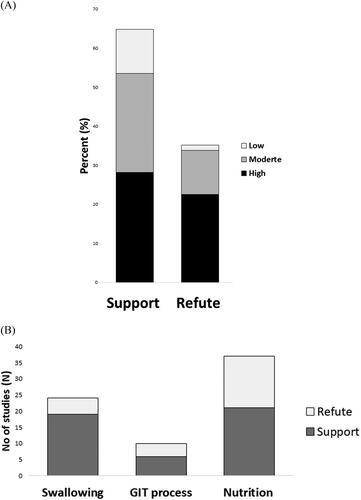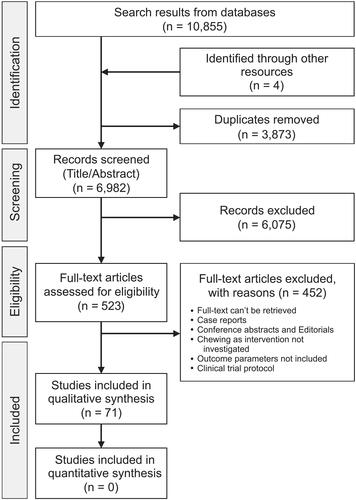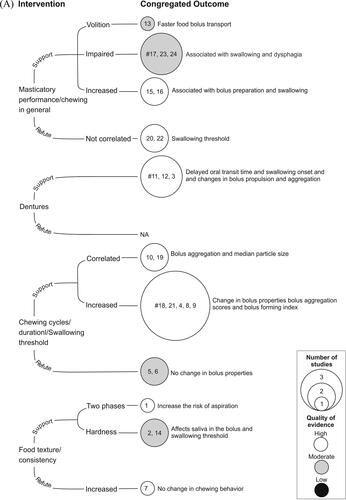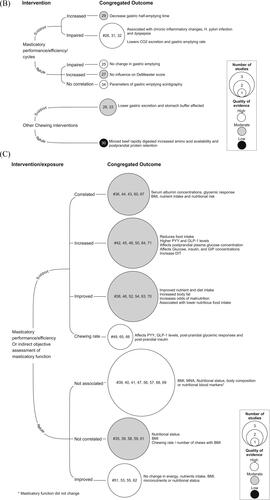Figures & data
Table 1. PECOs criteria for inclusion and exclusion of studies.
Table 2. Summary of the included studies.
Figure 3. Bar graphs showing the overall A) number of studies (in percent) supporting and refuting the hypothesis that chewing is a mechanical or physiological contributor in the swallowing process, physiologic/pathologic processes of the gastrointestinal tract, and nutrition-related parameters. The different shades of the bars represent the methodological quality of the studies based on the Joanna Briggs Institute (JBI) Critical Appraisal Checklist. B) showing the number of studies (N) supporting and refuting the hypothesis.

Table 3. A. Question: Does chewing function affect or contribute to swallowing function
B. Question: Does chewing function affects or contributes to the physiologic/pathologic processes of gastrointestinal tract
C. Question: Does chewing function affects or contributes to nutrition-related factors
Data availability statement
Data can be obtained from the corresponding author on reasonable request.



